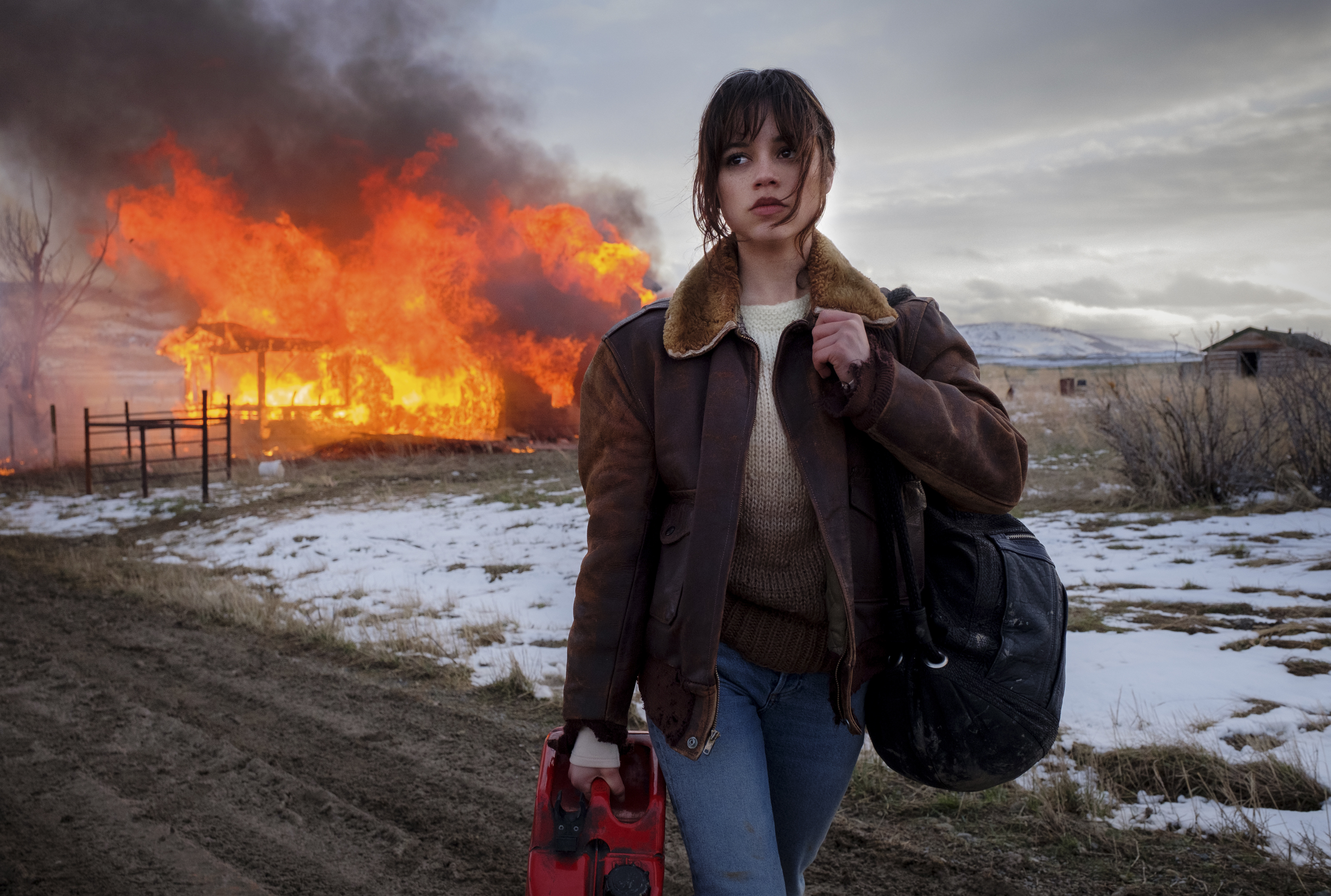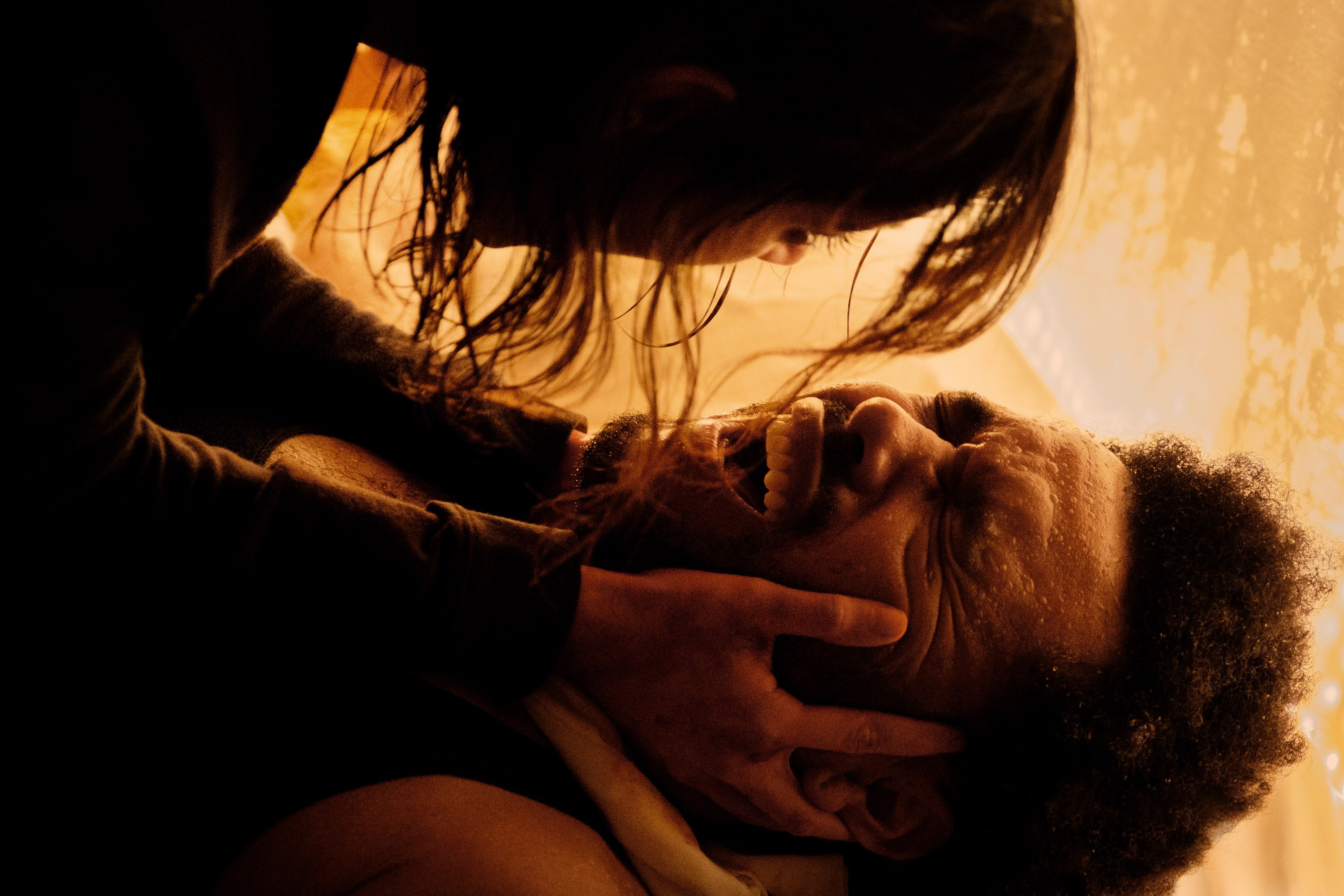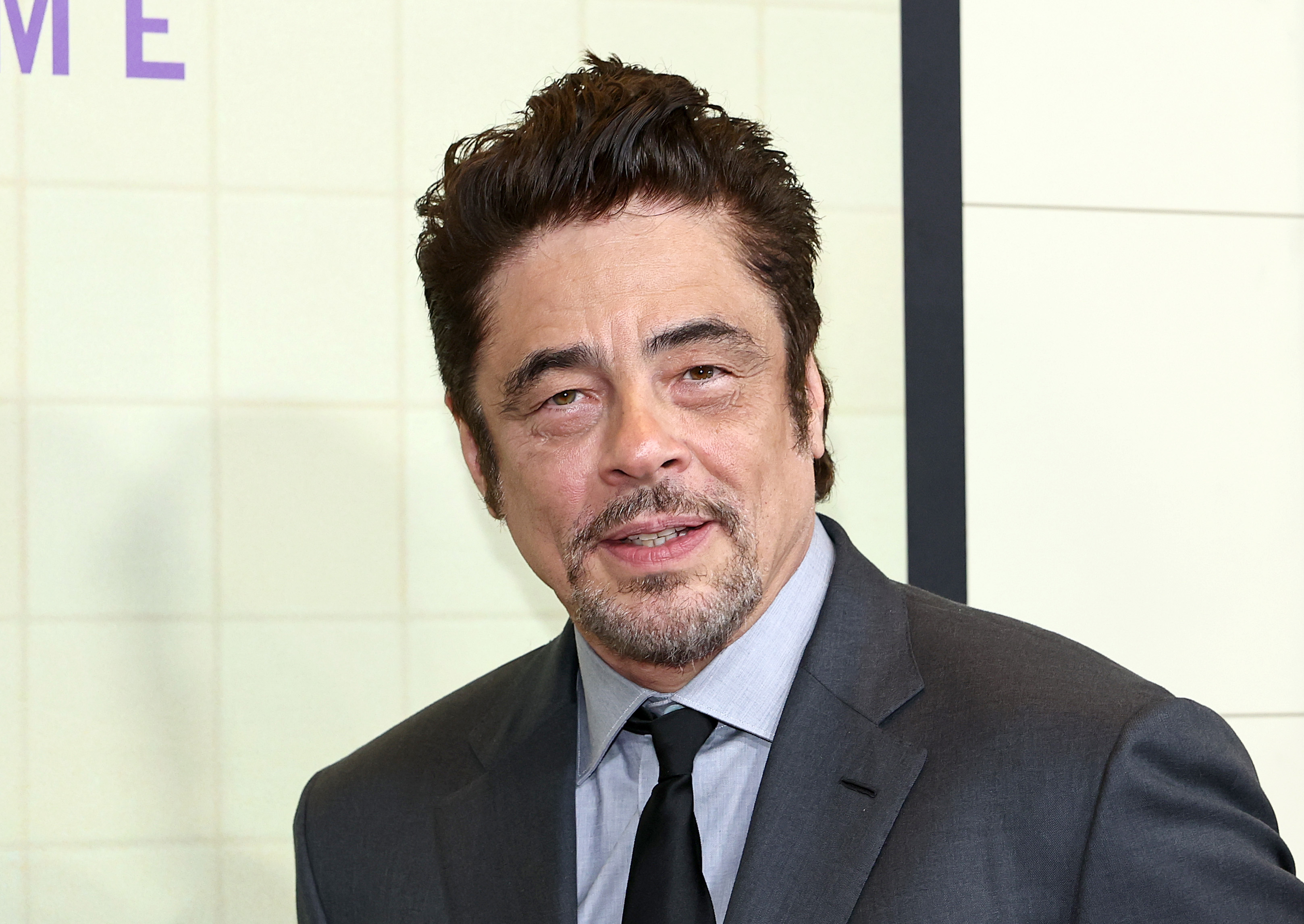In “Hurry Up Tomorrow,” Abel Tesfaye (“The Idol”) confronts his darkest demons and sets fire to his popular musical alter ego, The Weeknd. The film, directed by Trey Edward Shults (“Waves”), functions as a Jungian fever dream in which we enter Tesfaye’s psyche during the onslaught of sleep paralysis. He does battle with his persona, his ego (Barry Keoghan’s manager, Lee), and his animus (Jenna Ortega’s mysterious Ani) in order to put the past behind him and move on.
The film is brilliantly shot by cinematographer Chayse Irvin (“BlacKkKlansman”) in 35mm, principally using the Arricam LT camera (containing both spherical and anamorphic lenses) and Kodak Vision3 500T 5219 film stock with shifting aspect ratios to reflect the stages of Tesfaye’s mental breakdown. Irvin predominantly utilized 1.85:1 but then expanded to 2.39:1 for the two arena concerts, and collapsed to 4:3 for his more intense and claustrophobic moments with Ani.
“It was quite a big exploration, to be honest,” Irvin told IndieWire. It tasked me with a lot of different attempts at experimentation. There’s a lot that didn’t ever make it into the film. I had so many devices that I wanted to experiment with. The sum of the film is just an expression of maybe 20 to 50 percent of what I had to offer in that regard. So the preparation was quite intense. I was playing with pinhole lenses and different frame rates. I have a whole library of things, and I would experiment in isolation, or I would have an apprentice assisting me in an office that we could take over with some equipment.
“I even remember shooting some tests infrared [for the second concert that Tesfaye abruptly ends when his voice gives out],” he continued. “I had a camera, a filter from London flown in, and a camera converted to that format. And then I shot with some infrared light, and it created this blood red image. I just remember hearing this story that Abel told Trey before we started shooting, when Abel actually lost his voice in a concert at SoFi [in Inglewood]. He was so ashamed, and all he heard was the crowd booing and throwing things. I reviewed the footage, and it was a different reality entirely. They weren’t doing any of those things. I think he must’ve felt so alarmed at losing his voice. I had this idea of the people looking at him in that moment would be captured on infrared and look like demons.”

Every chapter of Tesfaye’s journey has a different look, and the cinematographer did a lot of pushing and pulling and underexposing of the image that required special processing and lens modification from Panavision. This was especially apparent when Ani burns down the house in Montana in a Steadicam oner. Irvin also shot an HDR pass to enhance the surreal atmosphere of the club celebration after the first concert (where the center of the frame looks normal, but the sides are smeared). Irvin mainly wanted a lot of detail in the shadows, but still very contrasty in a way that provided a rich image without looking too clean or saturated.
The most remarkable moments occur the morning after Tesfaye and Ani spend the night together in an L.A. hotel. He tries to leave, and she hits him over the head with a bottle. He then has a nightmare where he rides the elevator down to the parking garage and emerges in a dark tunnel where he’s frightened by a screaming Ani. “It was the most intense part of the shoot because we shot in a cave somewhere in downtown Los Angeles,” Irvin said. “The only light sources [come from] the phone. And so we had to figure out how to create our own light source that can operate and function as a prop.”
They laid a special dolly track (Dragon Track) that’s like a monorail to track with Tesfaye as he slowly walks down the center. “It was quite a bit of work bringing all the equipment down there, setting it up, and Jenna when she’s going crazy and screaming,” added Irvin. “She could only do it so many times until she’d lose her voice or potentially hurt herself.”
Tesfaye then transitions to somewhere in the snow with a fire burning, staring at himself as a child. “We shot up at a ranch in the Valley where we found a plateau in the hills,” Irvin said. “We set up a large crane, and we slowly followed him with the crane, and we set the flames, and special effects did all the snow artificially. It took a long time to prepare the shot. That was our last shot on the shooting schedule.”

Tesfaye wakes up tied to the bed with Ani demanding that he tell her the truth about what’s eating away at his soul. But soon after, Lee breaks into the hotel room and squares off with Ani. They have a face-to-face that explodes into the next room with a 180-degree pan, and it starts to get more and more violent with Irving on the nose of the dolly and the camera moving on different axes.
“It’s always interesting to me how violence is depicted in cinema,” the cinematographer said. “And I like it expressed in a form that is the least cliche in the sense that there aren’t punches thrown, there aren’t kicks, it’s not this choreographed thing. We rehearsed that sequence for an evening, and we were shooting it the next day. And doing that amount of blood coming out of Barry’s neck is a one-take thing. It stains the carpet, it stains his clothes. You have to really have your ducks in a row, and there are no questions about how it’s supposed to look and feel. And then you hand it off to the performer to really sell that…playing with time and stretching it out.”
Ani’s mission to exorcise Tesfaye’s inner demons turns meta when she plays and dances to a couple of his songs (“Blinding Lights,” “Gasoline”), analyzing their meaning while he’s helplessly tied to the bed. “That’s also a very intense sequence,” said Irvin. “But some of that stuff where she’s enjoying herself, me and Trey and Abel found it very humorous. It was kind of us having fun with it, too. But the tone and the mood of the room and the lighting is very strong and dramatic. There’s something about this kind of film that creates this richness or blends with different genres. It really validated our intentions with this kind of cinema.”



